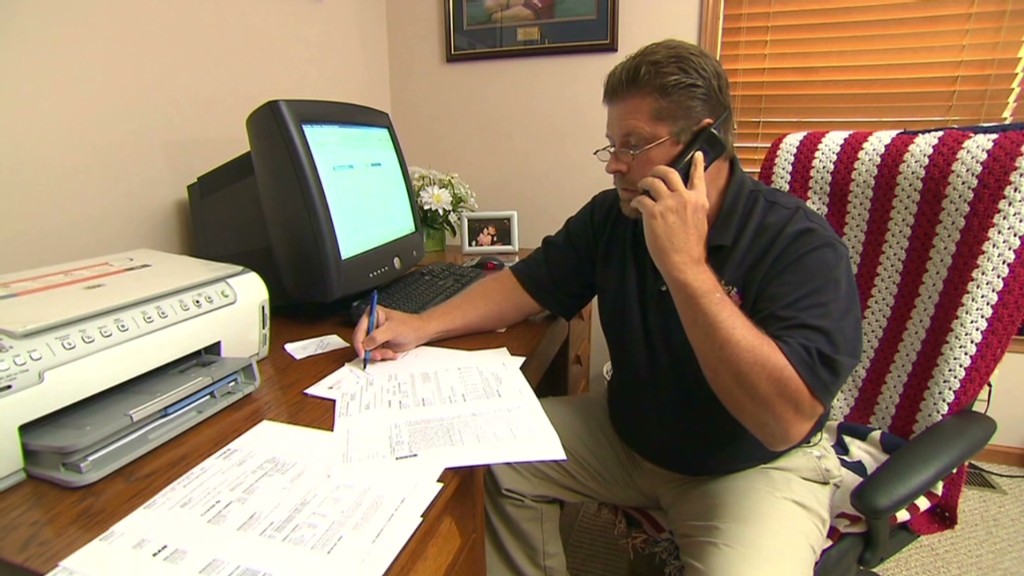
When Roman and Marianna Bediner's Staten Island, N.Y., home was clobbered by Superstorm Sandy they took some comfort in knowing that it was insured. But a few days later, when they learned that their coverage would pay for only a fraction of the $75,000 to $100,000 needed to put the house back together again, that feeling evaporated.
During the storm, Roman said the waters of Lower New York Bay rose by close to 11 feet, destroying all the walls, floors and ceilings -- not to mention the furniture and carpets -- on the first floor of his home. When the area flooded, the sewers backed up, filling the Bediners' ground floor with water that contained raw sewage and contaminating the home.
 |
| The Bediner's Staten Island, N.Y., home as the floodwaters started to subside post-Superstorm Sandy. |
The Bediners carry both homeowners and flood insurance, which is issued by FEMA's National Flood Insurance Program (NFIP) and required of homeowners in flood-prone areas. In theory, it's a lot of protection. But in practice, it can be very little.
His homeowner's insurance policy from Liberty Mutual doesn't cover flooding, just damage caused by high winds. Two days ago, the adjuster came by to inspect the home. The offer: A mere $5,045 for wind damage to the stucco exterior and garage door.
Bediner's meeting with the flood insurance adjuster was even worse: Most of the repairs -- the walls, ceilings, floors and the ruined office equipment in his downstairs office -- would be not be covered by his flood insurance policy. The adjuster said he won't be able to give him an exact figure for a couple of weeks but told him not to anticipate much.
Related: FEMA may not have enough to pay for flood damage
"Shocked is an understatement," he said. "You pay your premiums and, when something happens, you're basically screwed."
A big part of the problem for Bediner and other victims of Superstorm Sandy is that NFIP's flood insurance does not cover any upgrades done to basements. Any finished walls, floors and ceilings or personal belongings that get destroyed while in a basement won't be covered.
The only claims the policy will honor for basement damage are for things required to run the household, like furnaces, as well as structural elements, like stairways and the foundation.
"The adjuster said we would not get a penny for the ground floor except [to repair] the heating and AC," said Bediner.
Bediner said he didn't realize that his policy was so limited in its coverage. "That doesn't mean it isn't in the policy documents, though," he said. "It's one of those things that no one tells you and you don't know."
Related: Mortgage relief coming for disaster victims
Making matters even more frustrating for Bediner is the fact that he's never considered his ground floor a basement.
Like many other recently built houses in his neighborhood, the Bediners' has a ground level garage on the bottom floor that has an extra room right behind it containing the home office. The rest of the living spaces are on the upper floors. The NFIP treats enclosed ground floor spaces like these the same way they treat basements.
Liberty Mutual, which the Bediners also purchased their flood insurance through, said it was referring the flood claim to FEMA for review. The NFIP wouldn't comment on individual's claims except to point to its guidelines.
Related: Governors say no to hurricane deductibles
In the meantime, Bediner has already paid a contractor $6,000 to secure, clean up and decontaminate the house, merely a fraction of the estimated $75,000 to $100,000 needed to repair the home.
While Bediner, a 32-year-old vice president for technical services at a tech company, and his wife, who is a paralegal, are doing well financially, the parents of two young children don't have that kind of money.
And Bediner is far from alone. Tens of thousands of houses were damaged in the area. New York officials have said that 20,000 to 40,000 New Yorkers may have been left homeless by the storm.
"It's not just me," he said. "There are hundreds of families going through the same thing."
